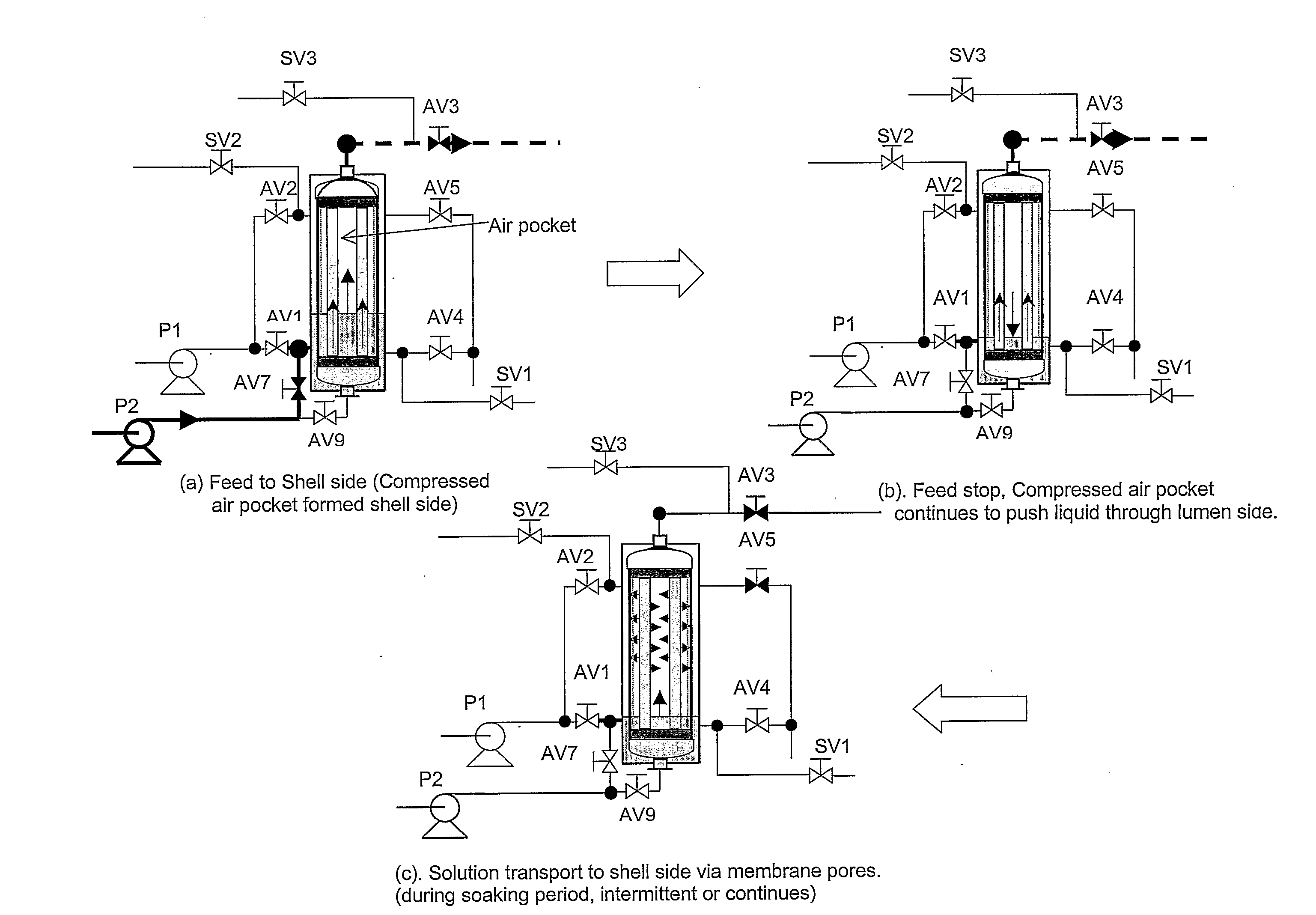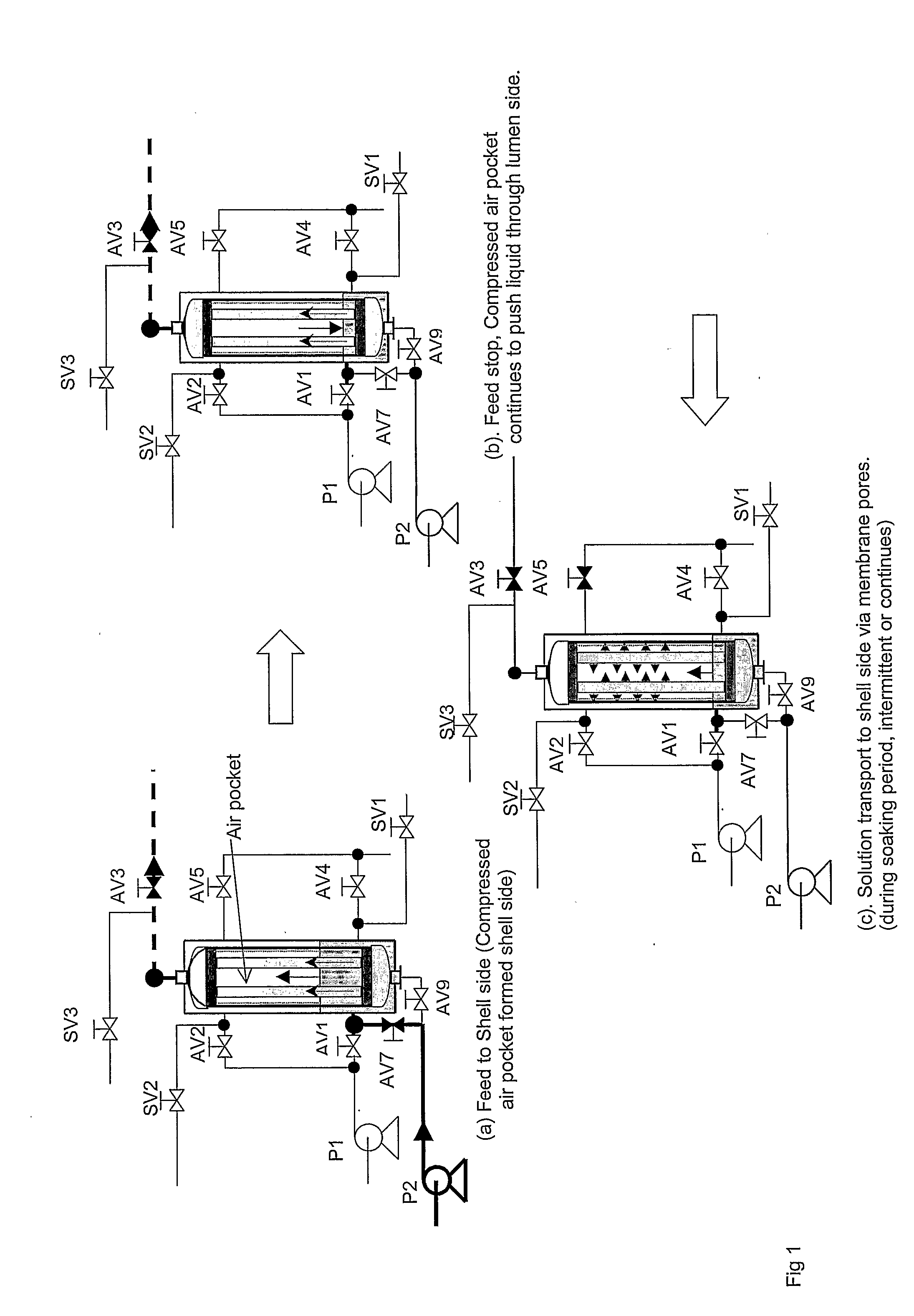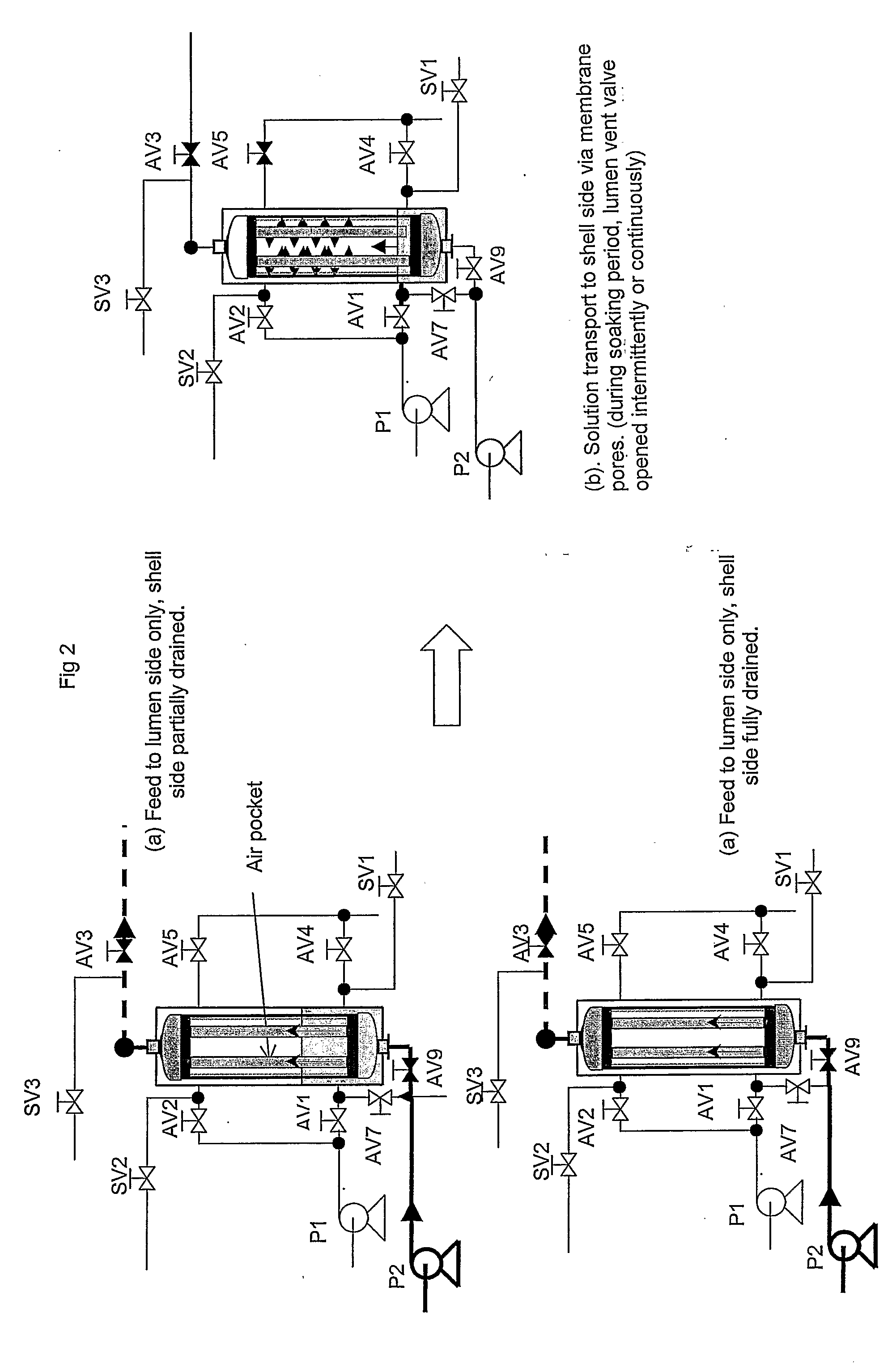Chemical Clean For Membrane Filter
a filter and membrane technology, applied in the field of cleaning methods, can solve the problems of deterioration of filter permeability, and increased transmembrane pressure and ultimately filtration energy consumption
- Summary
- Abstract
- Description
- Claims
- Application Information
AI Technical Summary
Benefits of technology
Problems solved by technology
Method used
Image
Examples
example
[0081]A six-module Memcor CMF-L pilot was used for the comparative tests. The filtration process involves 30 minutes filtration followed by a gas pushed backwash. The recycle repeats several times before maintenance clean is carried out.
[0082]As shown in FIG. 4, the membrane fouling rate is judged by an increase in the membrane resistance. After filtering for 30 minutes, the membrane resistance rises. The backwash can partially reduce the membrane resistance. However, the backwash did not fully recover the membrane's permeability and the trend of resistance continues to rise. Maintenance clean was performed to further reduce the membrane's resistance and therefore better recover the membrane's permeability. A general trend is depicted in FIG. 4. The efficiency of maintenance clean is defined as:
MC Efficiency=(R1-R2) / (R1-R0)
[0083]Where R0 is Resistance straight after the last chemical clean[0084]R1 is Resistance straight after the last backwash before maintenance clean[0085]R2 is Res...
PUM
 Login to View More
Login to View More Abstract
Description
Claims
Application Information
 Login to View More
Login to View More - R&D
- Intellectual Property
- Life Sciences
- Materials
- Tech Scout
- Unparalleled Data Quality
- Higher Quality Content
- 60% Fewer Hallucinations
Browse by: Latest US Patents, China's latest patents, Technical Efficacy Thesaurus, Application Domain, Technology Topic, Popular Technical Reports.
© 2025 PatSnap. All rights reserved.Legal|Privacy policy|Modern Slavery Act Transparency Statement|Sitemap|About US| Contact US: help@patsnap.com



